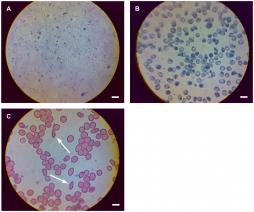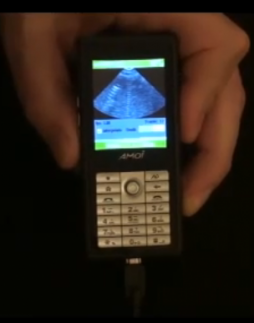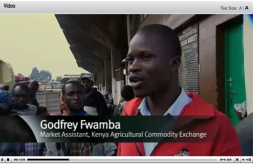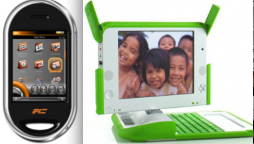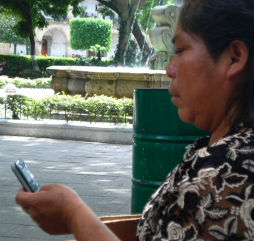mobile phone
Posted by VivianOnano on Jul 11, 2011
Evaluating the Impact of Mobile Phone Based ‘Health Help Line’ Service in Rural Bangladesh data sheet 2023 Views
Author:
Dr Md. Ashraf, Mahfuz, Noushin Laila Ansari, Bushra Tahseen Malik, Barnaly Rashid.
Abstract:
Access to basic health service is limited in rural areas of Bangladesh, where 80% of the total population lives. For instance, 35% of doctors and 30% of nurses are located in four metropolitan districts where only 14.5% of the population lives. Most of the rural people are physically remote from the qualified health care providers. Two major mobile phone service providers in Bangladesh have initiated mobile health care help line service s nationwide as a remedy in this case. Since there is much hope of mobile phones to be used for basic health care services for populations living in rural areas, this research aims to evaluate how far such interventions reached for the improvement of health care in those communities. Through an interpretive case-based research strategy, our field studies uncover enthusiasm from the rural people towards availing health help line services and the intervention's contribution to improved health-seeking behavior.
Posted by VivianOnano on Jul 06, 2011
Claim Mobile: Engaging Conflicting Stakeholder Requirements in Healthcare in Uganda data sheet 560 Views
Author:
Ho, Melissa R., Emmanuel K. Owusu, and Paul M. Aoki.
Abstract:
Claim Mobile is a platform designed to support a project that subsidizes healthcare by reimbursing health service providers in Uganda for treatment of patients with sexually transmitted infections. As with many development projects, the Uganda Output-Based Aid (OBA) project involves a number of stakeholders: the service providers, the project implementers,the financiers, and the Ugandan government. Design of an appropriate solution requires meeting the various and conflicting requirements of all of these stakeholders. In this paper we detail the rapid design and testing of a pilot implementation of a mobile and web-based system for processing claims forms, based on two prior field visits to Uganda. Based on a comparative device study, semi-structured interviews, health clinic surveys, and a brief deployment, we affirm the selection of the mobile phone as a platform from the health clinic perspective, and further suggest that effective design for development requires more than addressing requirements of the the “users” of the mobile phones but also all the other stakeholders involved, who may have conflicting requirements.
Posted by AnneryanHeatwole on May 07, 2011
This podcast originally appeared in an edited form on The World Food Programme's blog.
The collection and analysis of information from the field is a big part of ensuring that programs are working correctly. Recently, journalist Justin Smith interviewed George Mu'ammar of the World Food Programme's Vulnerability Assessment and Mapping Unit on how his department uses mobile technology to collect data. Listen to the podcast below:
Posted by MarkWeingarten on Jan 13, 2011
A Study of Connectivity in Millennium Villages in Africa data sheet 1485 Views
Author:
Puri, Jyotsna, Patricia Mechael, Roxana Cosmaciuc, Daniela Sloninsky, Vijay Modi, Matt Berg, Uyen Kim Huynh, Nadi Kaonga, Seth Ohemeng-Dapaah, Maurice Baraza, Afolayan Emmanuel, and Sia Yyimo
Abstract:
The Millennium Villages Project (MVP) is a community-based comprehensive multi-sectoral approach to achieving the Millennium Development Goals (MDGs) in Africa over a five-year period. MVP and Ericsson’s Consumer Lab collaborated to investigate the baseline conditions for enhanced connectivity and integrating mobile telephony in MVP sites. It is hypothesized that this will accelerate the achievement of the MDGs through improved communication and availability of information. Using quantitative and qualitative methods, the research team aimed to assess the effects of network strengthening and strategic integration in the context of a rural village in a low-income African country.
Four Millennium Village sites were examined for this study on connectivity: Bonsaaso, Ghana; Dertu, Kenya; Ikaram, Nigeria; and Mbola, Tanzania. The survey results from the sites showed common attributes for mobile phone owners but usage trends differed across study sites. Given the results, in three of the four sites, there is a significant market to be explored for voice services to be strengthened and made more easily available in terms of infrastructure and costs. Lessons drawn from these sites can provide us with useful insights into the potential for development and use of mobile phones in the rest of the continent, in addition to providing useful policy implications.
Posted by MelissaUlbricht on Oct 22, 2010
Kanchoo data sheet 3306 Views
Organization that developed the Tool:
Problem or Need:
Kanchoo is a support service for publishing mobile phone applications. Users provide the content and graphics and Kanchoo develops the application and provides a content management system. Once the application is active, the company can also assist with monetization and advertising services. Is is a Hong-Kong based company and Kanchoo means "publish" in Chinese.
Brief Description:
Kanchoo works with media companies, businesses, and organizations to publish and distribute content to mobile platforms. The company asks users to submit specific graphics and content and then develops the application and provides a content management system for updates to the application. The service costs users US$88 to create the application and US$28/month to host it.
Tool Category:
App resides and runs on a mobile phone
Key Features :
Kanchoo makes it easy for users to create their own mobile phone applications. Users create an account and upload a small number of required items. Users can preview the application before Kanchoo submits it to the iTunes App Store for approval. Kanchoo also provides a content management system for the user. It is free to create an account and experiment with the service.
Reviews/Evaluations:
http://www.killerstartups.com/Mobile/kanchoo-com-create-your-own-iphone-apps
Is the Tool's Code Available?:
Is an API available to interface with your tool?:
Posted by AnneryanHeatwole on Feb 19, 2010
Women and Mobile: A Global Opportunity data sheet 2566 Views
Author:
GSMA, Cherie Blair Foundation for Women, Vital Wave Consulting, women, mobile ownership, access to telecommunications, poverty, gender gap
Abstract:
Mobile phone ownership in low and middle-income countries has skyrocketed in the past several years. But a woman is still 21% less likely to own a mobile phone than a man. This figure increases to 23% if she lives in Africa, 24% if she lives in the Middle East, and 37% if she lives in South Asia. Closing this gender gap would bring the benefits of mobile phones to an additional 300 million women. By extending the benefits of mobile phone ownership to more women, a host of social and economic goals can be advanced.
Mobile phone ownership provides distinct benefits to women, including improved access to educational, health, business and employment opportunities. Women surveyed across low and middle-income countries on three continents believe that a mobile phone helps them lead a more secure, connected and productive life.
Posted by SushmitaNY on Aug 20, 2009
Newsweek recently did a story on this discovery entitled Dial "D" for Diagnosis. The story makes the connection to what we reported on ealier: the potential of mobile tech for disease diagnosis.
This potentially socially transforming technology was the result of a challenge to a class of Biomedical Engineering graduate students at University of California, Berkeley, by Professor Daniel Fletcher.
He asked the students to respond to an imaginary scenario: You are hiking in a remote village where an unknown infectious disease is spreading. What could you build with only a camera cell phone and a backpack of lenses that might help identify the disease? The product: the Cellscope (please bear with the intro advert) and here is the YouTube video.
Posted by SushmitaNY on Aug 16, 2009
A group of researchers from University of California at Berkeley and San Francisco have built a fascinating new device, which should make disease diagnosis in the field in the developing world a lot more feasible. The new device takes advantage of the recent penetration of mobile telephones in the remotest parts of the world – places where there are few health amenities, or even reliable roads and power.
Most mobile telephones today have built-in cameras which, although they may not be the dream of a professional photographer, can nevertheless produce digital images at sufficient resolution for diagnostic pathology. The researchers have combined a camera-equipped mobile phone with a simple light microscope, and packaged it into a simple, portable and rugged “diagnostic field microscope” (for technical details, please see here).
Posted by SushmitaNY on Aug 16, 2009
Medical imaging has revolutionized western medicine in the past two decades, with the frontiers being constantly pushed to allow better, earlier and faster diagnosis for a variety of diseases. The story is quite different, however, in the developing world where, according to recent WHO estimates, over 50% of medical equipment that is available is not being used because it is too sophisticated or in disrepair or because the health personnel are not trained to use it. WHO further estimates that some three quarters of the world population does not have access to medical imaging.
One problem that may be at least partially responsible for this discrepancy is that typical medical imaging equipment is large, non-portable, expensive, require multiple components to work in concert (data acquisition, data analysis, image rendering and visual display), and require highly trained personnel to operate them optimally.
Posted by KatrinVerclas on May 04, 2009
Take a low-cost ultrasound probe, a Windows mobile phone, and the skills of two scientists at Washington University in St Louis in the United States, and you get the world's first mobile-phone ultrasound instrument.
USB-based ultrasound probes have been around since 2005, offering a much cheaper and more portable alternative to larger ultrasound machines. Probes provide increasingly high-quality imaging for a tenth of the cost. A typical, portable ultrasound device costs around $20,000, while USB probes sell for around $2,000 right now - and the price is declining. Probes are ideally suited for first-responders and for primary care in developing countries, for example.
The small probes are connected to a phone with a USB cord that have been, typically, connected to a laptop for displaying the images. But carrying around laptops for transmitting images is not an option in many clinics in developing countries for lack of consistent electricity, heat, and lack of Internet access.
Posted by KatrinVerclas on Jan 26, 2009
The ongoing debate over the value of cheap and open laptops for users in developing countries as opposed to mobile phones continues, most recently with a post from Cory Doctorow in the Guardian UK. The One Laptop Per Child (OLPC) initiative, the most visible and audacious of the low-cost laptop projects, has been in the news recently for cutting half its staff and severely scaling back and refocusing its operations. OLPC had originally promised to promote economic development by distributing free computers to two billion children in developing countries.
Doctorow in the Guardian argues what we all believe in -- that information technology is an essential ingredient to economic development. He notes:
Posted by KatrinVerclas on Sep 24, 2008
CNN recently reported on mobiles in election monitoring -- providing real-time data from the polling stations transmitted via mobiles. The article asserts: "The humble mobile phone is driving a new revolution which some experts hope could bring fairer elections and democracy to some African states. During the 2006 local government elections in Senegal, Radio Sud used reporters and correspondents with cell phones to call in what they saw. Many African countries have struggled against rigged elections and authoritarian rule since gaining independence last century. However, African observers say the growth of simple communication technologies like cell phones are assisting many states to progress towards open and fair elections in increasingly democratic systems."
CNN argues that the use of mobile phones increases accountability in elections and allows "independent media, especially radio, to provide accurate coverage of elections and make it more difficult for ruling parties to cheat and get away with it."
Posted by KatrinVerclas on Sep 02, 2008
By Katrin Verclas and John Soeren Petterson
There are two notable events this fall focusing on mobile telephony for social impact and for development. The first event is MobileActive08, October 13-15 in South Africa. The second is M4D 2008: Mobile Communication Technology For Development, December 11 and 12 in Sweden.
We are the organizers of MobileActive08 and M4D, and are jointly hoping that our events will advance the exploration of the emerging field of mobile technology for social impact. Both of our events are interdisciplinary and include NGO practitioners, technologists and researchers. Together we will explore how mobile technology can advance work in a wide variety of issue areas such as health, advocacy, livelihoods, environmental protection and citizen media.
Posted by KatrinVerclas on Mar 16, 2008
Pictures and video out of Lhasa and Xiahe are slowly emerging, yet again initially mainly taken with camera phones and transmitted clandestinely across the border to transmit to a global audience.
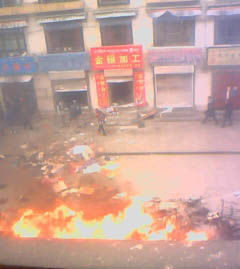
According to reports, mobile networks and Internet access have been restricted for the last few days. Anti-Chinese protests led by Buddhist monks spread to other cities after a violent crackdown by Chinese troups on Friday that may have left as many as 100 protesters dead. Protests began peacefully last Monday but turned violent yesterday. Human Rights Watch alleged Chinese security forces "beating protesters, firing live ammunition and surrounding the Ganden Drepung and Sera monasteries."
Tibet has been occupied by China since 1950.
Update: From Chinese Twitter clones, comments about Tibet.
Images courtesy of Tibetan Center for Human Rights
Posted by KatrinVerclas on Mar 13, 2008
We are happy to announce MobileActive08, a three-day conference on mobile technology for social impact to take place October 13-15 in Johannesburg, South Africa.
Organized with our amazing colleagues at Sangonet in South Africa, the theme of the 2008 event is "Unlocking the Potential of Mobile Technology for Social Impact." MobileActive08 will convene 250 civil society, development and technology practitioners interested in the use and application of mobile technology in civil society. This will be the largest international civil society event to date focusing on this topic.
Participants include non-profit practitioners using mobile phones in innovative and creative ways or considering mobile applications in support of their activities, mobile technologists, researchers studying the use of mobile phones, government officials, donors and representatives from the telecommunications industry.
We are especially pleased to welcome IDRC as a major supporter of the event. IDRC has been conducting research in how mobile telephony is advancing development and civil society goals, and is emerging as the major knowledge center of research on mobiles in health and development.
Posted by CorinneRamey on Feb 11, 2008
Claire Joyce Tempongko, a Filipina immigrant, was murdered by her ex-boyfriend in front of her two young children five years ago. Tempongko had repeatedly tried to get help from state services -- she had called the police before, and her ex-boyfriend had been in jail for domestic violence -- but she was murdered despite the involvement of various services.
Immigrants like Tempongko repeatedly face language and cultural barriers to getting help from domestic abuse. Tempongko's murder was one of the factors that eventually led to a new translation program which was recently implemented by the city of San Francisco in California in the western United States. The new program brings translation services to non-English speaking victims of domestic violence in over 170 languages, all via mobile phone.
Jill Tregor, a Senior Policy Analyst with the San Francisco Department on the Status of Women, sat down with MobileActive for an interview.
Posted by CorinneRamey on Dec 01, 2007
The Stockholm challenge finalists have been announced. We here at MobileActive are content partners of the Stockholm Challenge, and are thus pleased to see that two of the nine finalist projects use mobile phones. The projects, selected from 119 entries, were "chosen by the jury as the best examples of in Information and Communication Technologies (ICT) for Development."
Posted by KatrinVerclas on Nov 28, 2007
Just back from MobileActive07 in Brazil (more on that shortly!) we are immediately jumping into sharing some of our learnings in an online discussion on using mobiles in human rights work over with our colleagues at New Tactics. Please join us there where we'll be dicussing with human rights practitioners all over the world question like:
1) How are you using mobiles in human rights work?
Posted by KatrinVerclas on Nov 07, 2007
I interviewed Paul Currion for a research project for the UN Foundation and Vodafone Group Foundation that will be released next year. I asked him about the "state of affairs" of using mobile phones in disaster relief work and humanitarian emergencies. Veritable blogger that he is, he summarized his thoughts on his blog and gave permission to cross-post here.
"I just had an interesting conversation with Katrin Verclas of Mobileactive, who is doing some research into cellphone use in different sectors, and in the course of our discussion a few points emerged about how cellphones are being used in the humanitarian sector.

